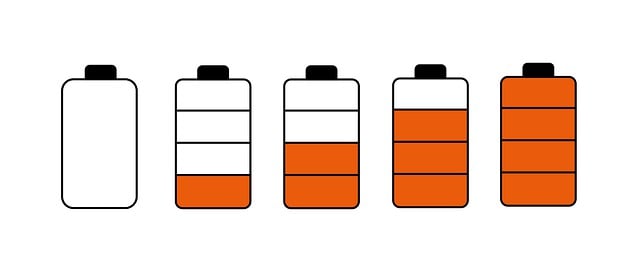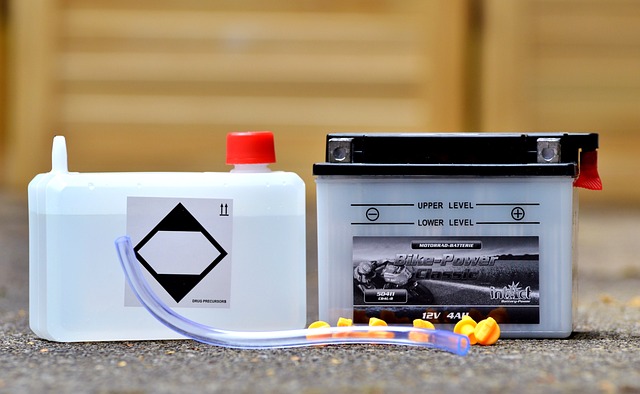If your car is experiencing slow engine starts, dimming headlights, or other signs such as a battery warning light or a loud grinding noise upon attempting to start, these may indicate that your car battery needs replacing. As batteries age, they lose their ability to hold a charge effectively, which can lead to decreased performance in powering the headlights, interior lights, and electronic accessories like the radio or air conditioning. This degradation is often accelerated by frequent use and exposure to extreme temperatures. To prevent total battery failure and ensure your car's electrical systems function safely and reliably, it's important to replace the battery as soon as these warning signs appear. Regular checks using a voltmeter or seeking professional advice when these issues are noticed can help you stay ahead of potential problems, reducing the risk of being stranded and the likelihood of more serious car issues stemming from a weakened battery. Replacing your car battery in response to these early indicators is crucial for maintaining the health and performance of your vehicle's electrical components.
When facing car trouble, identifying the signs of a dying car battery is crucial for safe travel and preventative maintenance. This article delves into the various indicators that signal it’s time to consider replacing your battery, from dimming headlights to sluggish engine starts. We’ll explore how temperature fluctuations impact battery health and the importance of proactive maintenance. Understanding these signs not only helps in timely battery replacement—replace battery—but also ensures your vehicle’s electrical systems operate reliably. Learn to recognize these subtle cues and take charge of your car’s battery longevity before a complete discharge leaves you stranded.
- Recognizing the Red Flags: Signs Your Car Battery May Need Replacement
- The Dimming Light: Understanding Headlight Performance Issues
- Unresponsive Electronics: When Your Car's Interior Lights Fail to Respond
- Sluggish Starts and Slow Responses: How Engine Cranking Problems Indicate Battery Trouble
Recognizing the Red Flags: Signs Your Car Battery May Need Replacement

When your vehicle’s engine cranks but fails to start, or you notice dimming headlights while idling, it may be one of the red flags indicating your car battery is on its last legs. These are clear signs that your battery’s charge capacity is dwindling and a replacement may be imminent. Another indication is a consistently slow crank when starting the engine, which suggests the battery’s ability to provide the necessary power upon request is weakened. Additionally, if you observe a battery warning light on your dashboard or hear a grinding noise when turning the key, these are prompts for immediate attention and could mean that your battery’s voltage levels are unstable and it may soon fail to hold a charge. Regular monitoring of your car battery’s health through these observable signs can help you avoid being stranded due to a dead battery. It is advisable to replace the battery before these symptoms escalate to prevent potential inconvenience or damage to other vehicle electrical components.
The Dimming Light: Understanding Headlight Performance Issues

When a car battery begins to reach the end of its lifespan, one of the first noticeable signs is the dimming of headlight performance. Initially, you might observe that your headlights are less luminous than usual, especially when you first start the engine. This can be attributed to the reduced voltage available from a weakening battery, which impacts the intensity of the lights. As the battery continues to degrade, this dimming effect may become more pronounced and occur more frequently. It’s not just about the brightness; the pattern of dimming can also vary. For instance, the headlights might begin faintly and gradually brighten as the engine runs and the alternator charges the battery. However, if the battery is struggling to hold a charge, this recovery might be incomplete, leaving your headlights still too dull for safe nighttime driving. Regular maintenance checks can help catch this issue early, ensuring that you replace the battery before it completely fails, which can prevent more serious problems and ensure your safety on the road.
Unresponsive Electronics: When Your Car's Interior Lights Fail to Respond

If your car’s interior lights dim and fail to brighten upon your command, or if electronic accessories like the radio or air conditioning seem sluggish to respond, it may be an early indicator that your vehicle’s battery is on its last legs. This behavior often signifies a weakening battery that has difficulty supplying enough power to support these functions. Over time, car batteries naturally degrade due to constant use and exposure to varying temperatures. When the battery’s charge capacity diminishes, it becomes more challenging for your car’s electrical system to draw the necessary voltage required for these systems to operate effectively. In such cases, proactive vehicle owners may opt to replace their battery before it completely dies, thus avoiding the inconvenience of being stranded with a car that won’t start. Regularly checking your car’s battery health through a voltmeter or a multimeter can help you ascertain the condition of your battery and determine if it’s nearing the end of its service life. If you notice these signs, it’s advisable to have your battery tested by a professional to avoid the risk of a dead battery, which could leave you in an unfortunate situation, far from a jump start or replacement options.
Sluggish Starts and Slow Responses: How Engine Cranking Problems Indicate Battery Trouble

When your vehicle exhibits sluggish starts and slow responses, it may be a clear sign that your car battery is on its way out. The engine cranking process is one of the first functions to suffer when a battery’s capacity begins to wane. Initially, you might notice that the engine takes longer to crank and start than usual. This is often due to the decreasing voltage output from the battery, which is necessary to power the starter motor. As the battery continues to age and its internal plates become less effective, this sluggishness can worsen, leading to a situation where the engine turns over very slowly or not at all. If your vehicle requires multiple attempts to start, or if you hear a distinctly weaker cranking sound than normal, it’s a strong indication that the battery’s charge is diminished and it may be time to replace the battery altogether. Regular maintenance and monitoring can help catch these issues early, allowing for timely replacement and preventing more serious issues that could arise from a fully depleted battery.
When a car battery reaches the end of its service life, it’s crucial to identify the signs early to prevent unexpected vehicle failures. This article has outlined key indicators such as dimming headlights, unresponsive interior lights, and sluggish engine starts that signal it may be time to replace your car battery. Regular vigilance and understanding these subtle warnings can save you from the inconvenience of a car that won’t start. If you notice any of these issues, proactive replacement of your battery will ensure your vehicle remains reliable and safe for travel. Remember, maintaining your car’s battery health is an integral part of overall vehicle maintenance, facilitating a smooth and uninterrupted driving experience.
